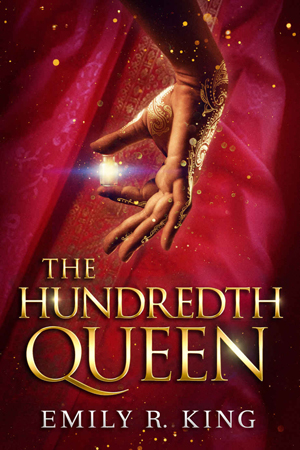| ________________
CM . . .
. Volume XXIV Number 8. . . October 27, 2017
excerpt:
Kalindra has been raised by the Sisterhood in the five virtues: obedience, service, humility, sisterhood, and tolerance. The girls are also taught to fight with the objective of becoming a sister warrior. “A sister warrior is well trained and physically strong.” The goal for most of these young women is to be “Claimed” by a male benefactor as a wife, concubine, or servant. If they are not claimed, they join the Sisterhood and live a life of seclusion and prayer. Kalindra, whose nickname is Bamboo girl because of her “awkward height and skinniness”, knows she is unlikely to ever be claimed and plans to devote herself to the temple. The arrival of Rajah Tarek throws Kalindra’s world into disarray. Even though she describes herself as a terrible fighter, unattractive, and sickly, Kalindra is chosen to become Tarek’s 100th rani, or queen. There is, however, another twist to this story. When the Rajah chooses a new wife, all his courtesans and other wives have the opportunity to compete against her, and each other, to change their ranking. In other words, all Tarek’s courtesans have the right to challenge Kalindra for the last throne. Kalindra has no desire to become Tarek’s queen as she is drawn to the handsome Captain Deven Naik. While preparing to fight for her life, she learns that she has a power that the Rajah has attempted to decimate growing within her. With this power, she may have a chance of surviving to become the 100th queen – if she is willing to kill the Rajah and start a revolution. So, King has provided the ultimate male fantasy; a harem of beautiful women fighting to the death to see who gets to be the wife of a powerful man. The novel also contains a recipe for most romance books: the seemingly weak and misunderstood heroine is coveted by the cruel overlord but loved by the noble and handsome captain of the guard. There is a lot of yearning and smoldering in this book, but there is also an underlying narrative that elevates the basic plot. The past haunts the present. As Kalindra learns the histories of the other wives and of her country, she starts to see how past decisions have corrupted her culture’s beliefs. She learns how the Rajah has worked to destroy the bhutas – people with magical powers. She also develops relationships with the other wives, and these relationships add substance and colour to the narrative. In summary, The Hundredth Queen is an action romance set in a fantasy; 2 parts forbidden kisses, 1 part rebellion with a touch of magic = a trilogy. Recommended. Jonine Bergen is a librarian working in Winnipeg, MB.
To comment
on this title or this review, send mail to cm@umanitoba.ca.
This Creative Commons license allows you to download the review and share it with others as long
as you credit the CM Association. You cannot change the review in any way or use it commercially. Commercial use is available through a contract with the CM Association. This Creative Commons license allows publishers whose works are being reviewed to download and share said CM reviews provided you credit the CM Association.
Next Review | Table of Contents For This Issue - October 27, 2017 |
